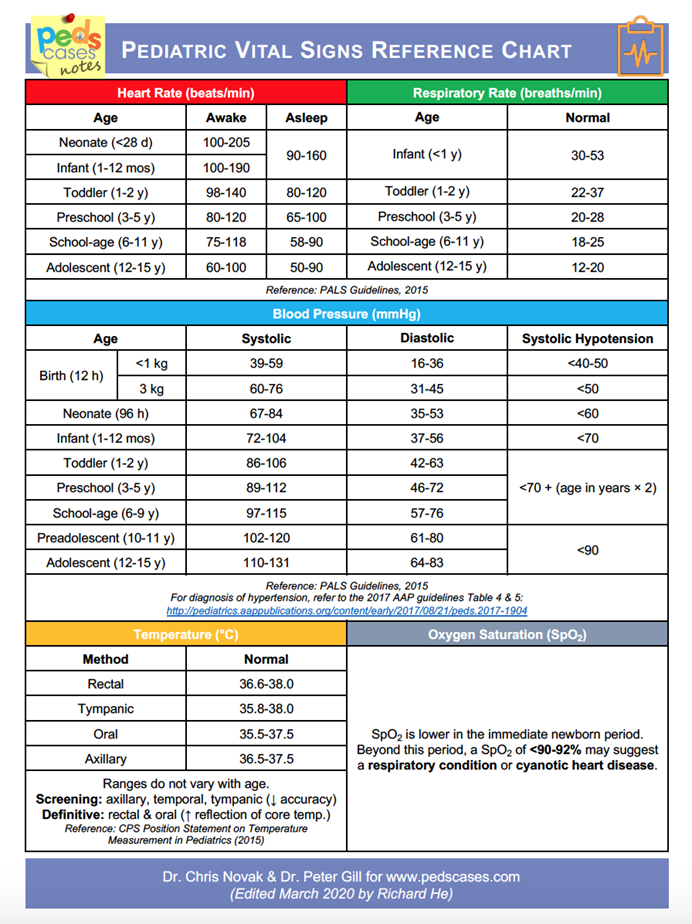A nurse is collecting data from a 4-year-old child. Which of the following findings should the nurse expect?
Heart rate 110/min
Capillary refill greater than 3 seconds
Weight gain of 0.9 kg (2 lb) in a year
Respiratory rate 32/min
The Correct Answer is A
A. Heart rate 110/min: A heart rate of 110 beats per minute is within the normal range for a 4-year-old child. The typical heart rate for this age is between 80 to 120 beats per minute.
B. Capillary refill greater than 3 seconds: Capillary refill time should be less than 2 seconds in a healthy child. A refill time greater than 3 seconds may indicate poor perfusion or dehydration, which is abnormal.
C. Weight gain of 0.9 kg (2 lb) in a year: A weight gain of 2 pounds in a year is below the expected range for a 4-year-old. Children in this age group typically gain around 4-5 pounds per year as they grow.
D. Respiratory rate 32/min: The normal respiratory rate for a 4-year-old child is typically between 20 to 30 breaths per minute. A rate of 32/min is slightly elevated and may indicate respiratory distress or other issues.

Nursing Test Bank
Naxlex Comprehensive Predictor Exams
Related Questions
Correct Answer is C
Explanation
A. Absent plantar reflexes: This is not typically associated with DDH. DDH affects the hip joint's formation, not reflexes.
B. Inwardly turned foot on the affected side: This finding is more indicative of conditions like clubfoot, not DDH.
C. Asymmetric thigh folds: This is a common finding in DDH. The folds may appear uneven due to the displacement of the femoral head.
D. Lengthened thigh on the affected side: In DDH, the thigh on the affected side may actually appear shorter, not longer, due to hip dislocation.
Correct Answer is C
Explanation
A. Taking the infant's vital signs every 2 hr: Monitoring vital signs every 2 hours can help assess the infant’s general condition and detect changes in heart rate and blood pressure, which can indicate changes in hydration status. However, it might not be sufficient alone to monitor fluid status.
B. Counting the number of wet diapers every shift: Tracking the number of wet diapers is an effective way to monitor the infant's fluid output and hydration status. An increase in wet diapers typically indicates improved hydration. This is a practical and non-invasive method for assessing the effectiveness of IV therapy in infants.
C. Weighing the infant at the same time every day: Daily weights are a critical measure of fluid balance in infants. A consistent daily weight check provides a direct and accurate assessment of the infant’s hydration status and response to IV therapy.
D. Measuring the infant's head circumference twice per day: Measuring head circumference is not relevant for monitoring hydration status. It is typically used to assess growth and development in infants, not fluid balance or response to IV therapy.
Whether you are a student looking to ace your exams or a practicing nurse seeking to enhance your expertise , our nursing education contents will empower you with the confidence and competence to make a difference in the lives of patients and become a respected leader in the healthcare field.
Visit Naxlex, invest in your future and unlock endless possibilities with our unparalleled nursing education contents today
Report Wrong Answer on the Current Question
Do you disagree with the answer? If yes, what is your expected answer? Explain.
Kindly be descriptive with the issue you are facing.
